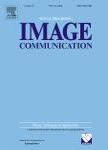版权所有:内蒙古大学图书馆 技术提供:维普资讯• 智图
内蒙古自治区呼和浩特市赛罕区大学西街235号 邮编: 010021

作者机构:Iran Univ Sci & Technol Image Proc Lab Sch Elect Engn Tehran Iran Univ Tehran Multimedia Proc Lab Sch Elect & Comp Engn Tehran Iran
出 版 物:《SIGNAL PROCESSING-IMAGE COMMUNICATION》 (信号处理:图像通信)
年 卷 期:2011年第26卷第3期
页 面:143-161页
核心收录:
主 题:Scalable video coding Multiple description coding Motion compensated temporal filtering Channel-aware redundancy-rate allocation Clustering
摘 要:Multiple description scalable coding based on T+2D wavelet decomposition structure is highly flexible for peer-to-peer (P2P) video streaming. Finding the optimal truncation point of each wavelet-decomposed code block (CB) within each description is an NP-hard problem (Akyol et al., 2007 [1]). For P2P video streaming, it is necessary to implement an efficient multiple description encoder with three attributes: adaptive (due to the time-varying capacity of the P2P network links and nodes), low-complexity (because of the low processing power of the receiving peer) with arbitrarily unbalanced descriptions (because of the unequal capacities of the different sending peers). To design a multiple description encoder with the above mentioned features, we propose a simple clustering algorithm for partitioning the CBs into a limited number of clusters. This simple and efficient clustering algorithm significantly reduces the size of redundancy-rate assignment matrix, such that one can find the optimal channel-aware cluster-level redundancy-rate assignment matrix using a low-complexity full search approach. This approach improves the decoding quality compared to the co-echelon adaptive frameworks (Akyol et al., 2007 [1];Tillo et al.. 2007 [8]) in which a non-optimal heuristic rate assignment pattern is used. Especially for the unbalanced P2P scenario (which is the usual case), the performance gain of the proposed approach over the one presented in Tillo et al. (2007) 181 (generating only balanced descriptions) is significant (0.95-3.0 dB). In addition, the proposed clustering approach may be analytically represented by closed-form relations for low-complexity computation of the optimal encoding parameters. Our complexity analysis shows that the proposed approach requires 52-96% less computations compared to the framework in Akyol et al. (2007) [1]. Therefore, an efficient real-time post-encoding adaptation mechanism may be realized. The simulation results demonstrate that